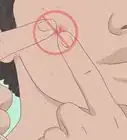This article was co-authored by Kaveri Karhade, MD. Dr. Kaveri Karhade is a board certified Laser, Medical, and Cosmetic Dermatologist in the San Francisco Bay Area. Her areas of expertise are acne and hair loss. She has advanced training in injectables, lasers, surgery, and other cosmetic treatments, and has published extensive research in medical journals. She holds a BS from Michigan State University and a Doctor of Medicine (MD) from the University of Michigan Medical School. She completed her internship in Internal Medicine at New York University School of Medicine and her Residency in Dermatology at Brown University School of Medicine. Dr. Karhade is a fellow of the American Academy of Dermatology and a member of the American Society for Dermatologic Surgery.
There are 11 references cited in this article, which can be found at the bottom of the page.
wikiHow marks an article as reader-approved once it receives enough positive feedback. In this case, 100% of readers who voted found the article helpful, earning it our reader-approved status.
This article has been viewed 357,017 times.
One of the primary causes of acne is having pores in the skin that either become clogged, or have become so large that dirt and bacteria enter the pore.[1] For this reason, many acne treatments work by scrubbing away dead skin cells and healing damaged pores. One way to quickly help your pores is by applying ice, which slows down blood flow and reduces inflammation by tightening up the skin temporarily. [2] Learning how to use ice therapy in conjunction with other acne products can help you quickly and easily heal an acne outbreak.
Steps
Using Ice to Treat Acne
-
1Make an ice pack. Rather than applying ice directly to your face, it's best to make an ice wrap or an ice pack.[3] If you don't have an existing ice pack, you can easily make one at home.
-
2Apply the ice pack. Once you've wrapped the ice cubes in a towel or sandwich bag, apply the ice pack to your face.[6]
- Rub pimples and acne scars with the ice pack for 10 to 15 minutes.
- Do not apply ice for longer than 20 minutes, as this can cause damage to your skin.[7]
Advertisement -
3Make ice part of your skin regimen. You can use the ice method twice each day. Aim to use it first thing in the morning when your skin is puffy, and again at night before you go to sleep.[8]
Understanding Acne
-
1
-
2
-
3Understand why ice works. Ice is helpful with managing current acne outbreaks and with preventing future outbreaks from occurring.
- Ice helps relieve swelling in the skin where acne persists. It can also reduce the redness associated with active pimples and old acne scars.[17]
- Ice shrinks the size of your skin pores, which can help prevent future acne outbreaks by reducing the chances of your pores getting clogged or infected.[18]
- Ice can be used for both short-term acne remedies and longer-term acne treatments.[19]
Building a Comprehensive Acne Regimen
-
1Use over-the-counter treatments. There are many over-the-counter acne creams, washes, and lotions, which all typically clean out pores by removing oil and dead skin.[20] The most common over-the-counter acne product ingredients include:
- Benzoyl peroxide - this compound kills bacteria, removes some excess oil, and sloughs off dead skin cells, effectively protecting open pores from dirt and bacterial infections.[21]
- Salicylic acid - this mild acid helps protect pores from becoming clogged.[22]
- Alpha hydroxy acids - these compounds, which typically include glycolic acid and lactic acid, help exfoliate the skin by removing dead skin cells and stimulating new skin growth.[23]
- Sulphur - this chemical element helps exfoliate the skin and remove some excess oil from the skin.[24]
-
2Apply topical prescription treatments. Over-the-counter treatments are often effective in treating mild to moderate cases of acne. In more serious cases of acne, your doctor or dermatologist may recommend a prescription-strength acne medication. The most common topical acne prescriptions include:
- Retinoids - this class of chemical compounds are derived from vitamin A, which helps promote new skin growth.[25] Retinoid-based medications are typically used in the evening, and may be applied three times weekly, working up to daily use, depending on the severity of acne symptoms.[26]
- Antibiotics - antibiotics work to kill bacteria that persists on skin and in pores, and may reduce redness and inflammation associated with acne.[27] The frequency of antibiotic use will depend on the severity of your acne. Follow your doctor's instructions when it comes to using antibiotics.
- Dapsone (Aczone) - this gel kills bacteria on the skin and helps keep pores clean.[28] Dapsone is typically applied twice daily in adults, and is not recommended for children. Your doctor or dermatologist may give you different dosage instructions, and you should follow any instructions from your doctor.[29]
-
3Try acne therapy. In cases of severe acne where prescription medications are not effective, some dermatologists may recommend more aggressive therapy treatments. Some of these therapy treatments are also used to treat acne scars.[30] Common therapy methods include:
- Light therapy - this method involves using light from various parts of the spectrum to kill bacteria that can cause acne flareups. Blue-light therapy can be performed at home without a doctor's supervision, while other types of light therapy require a doctor to administer the therapy.[31]
- Chemical peel - this method involves the application of a chemical solution to aggressively treat acne. Salicylic acid is a common chemical used in chemical peel procedures.[32]
- Extraction of whiteheads/blackheads - in this invasive method of treatment, a dermatologist uses specialized tools to surgically remove whiteheads and blackheads that have not responded to other topical treatments.[33] Extraction methods should only be performed by a dermatologist in a controlled medical environment.
- Steroid injections - this method involves treating acne lesions by directly injecting a prescription-strength steroid into the lesion.[34]
Expert Q&A
-
QuestionIs putting ice on your face bad?
 Kaveri Karhade, MDDr. Kaveri Karhade is a board certified Laser, Medical, and Cosmetic Dermatologist in the San Francisco Bay Area. Her areas of expertise are acne and hair loss. She has advanced training in injectables, lasers, surgery, and other cosmetic treatments, and has published extensive research in medical journals. She holds a BS from Michigan State University and a Doctor of Medicine (MD) from the University of Michigan Medical School. She completed her internship in Internal Medicine at New York University School of Medicine and her Residency in Dermatology at Brown University School of Medicine. Dr. Karhade is a fellow of the American Academy of Dermatology and a member of the American Society for Dermatologic Surgery.
Kaveri Karhade, MDDr. Kaveri Karhade is a board certified Laser, Medical, and Cosmetic Dermatologist in the San Francisco Bay Area. Her areas of expertise are acne and hair loss. She has advanced training in injectables, lasers, surgery, and other cosmetic treatments, and has published extensive research in medical journals. She holds a BS from Michigan State University and a Doctor of Medicine (MD) from the University of Michigan Medical School. She completed her internship in Internal Medicine at New York University School of Medicine and her Residency in Dermatology at Brown University School of Medicine. Dr. Karhade is a fellow of the American Academy of Dermatology and a member of the American Society for Dermatologic Surgery.
Board Certified Dermatologist If you do it for too long, maybe. It's not going to be particularly harmful if you do it to reduce acne inflammation, though.
If you do it for too long, maybe. It's not going to be particularly harmful if you do it to reduce acne inflammation, though. -
QuestionWhen is it a good idea to put ice on acne?
 Kaveri Karhade, MDDr. Kaveri Karhade is a board certified Laser, Medical, and Cosmetic Dermatologist in the San Francisco Bay Area. Her areas of expertise are acne and hair loss. She has advanced training in injectables, lasers, surgery, and other cosmetic treatments, and has published extensive research in medical journals. She holds a BS from Michigan State University and a Doctor of Medicine (MD) from the University of Michigan Medical School. She completed her internship in Internal Medicine at New York University School of Medicine and her Residency in Dermatology at Brown University School of Medicine. Dr. Karhade is a fellow of the American Academy of Dermatology and a member of the American Society for Dermatologic Surgery.
Kaveri Karhade, MDDr. Kaveri Karhade is a board certified Laser, Medical, and Cosmetic Dermatologist in the San Francisco Bay Area. Her areas of expertise are acne and hair loss. She has advanced training in injectables, lasers, surgery, and other cosmetic treatments, and has published extensive research in medical journals. She holds a BS from Michigan State University and a Doctor of Medicine (MD) from the University of Michigan Medical School. She completed her internship in Internal Medicine at New York University School of Medicine and her Residency in Dermatology at Brown University School of Medicine. Dr. Karhade is a fellow of the American Academy of Dermatology and a member of the American Society for Dermatologic Surgery.
Board Certified Dermatologist Ice is good in certain situations where you have inflammation or swelling associated with your acne, so if that applies to you, ice will help. It's also a good idea to use ice if you're prone to brown spots after your acne clears up.
Ice is good in certain situations where you have inflammation or swelling associated with your acne, so if that applies to you, ice will help. It's also a good idea to use ice if you're prone to brown spots after your acne clears up.
References
- ↑ http://www.mayoclinic.org/diseases-conditions/acne/basics/causes/con-20020580
- ↑ https://www.urmc.rochester.edu/encyclopedia/content.aspx?ContentTypeID=1&ContentID=4483
- ↑ https://www.urmc.rochester.edu/encyclopedia/content.aspx?ContentTypeID=1&ContentID=4483
- ↑ https://www.urmc.rochester.edu/encyclopedia/content.aspx?ContentTypeID=1&ContentID=4483
- ↑ http://timesofindia.indiatimes.com/life-style/beauty/Ice-cubes-for-a-glowing-face/articleshow/20681169.cms
- ↑ Kaveri Karhade, MD. Board Certified Dermatologist. Expert Interview. 11 January 2021.
- ↑ https://www.urmc.rochester.edu/encyclopedia/content.aspx?ContentTypeID=1&ContentID=4483
- ↑ http://www.huffingtonpost.com/2013/01/30/ice-facial-shrink-pores_n_2569082.html
- ↑ http://www.mayoclinic.org/diseases-conditions/acne/basics/definition/con-20020580
- ↑ http://www.mayoclinic.org/diseases-conditions/acne/basics/causes/con-20020580
- ↑ http://www.mayoclinic.org/diseases-conditions/acne/basics/causes/con-20020580
- ↑ http://www.mayoclinic.org/diseases-conditions/acne/basics/causes/con-20020580
- ↑ http://www.mayoclinic.org/diseases-conditions/acne/basics/causes/con-20020580
- ↑ http://www.mayoclinic.org/diseases-conditions/acne/in-depth/acne-products/art-20045814
- ↑ http://www.mayoclinic.org/diseases-conditions/acne/in-depth/acne-products/art-20045814
- ↑ http://www.mayoclinic.org/diseases-conditions/acne/in-depth/acne-products/art-20045814
- ↑ Kaveri Karhade, MD. Board Certified Dermatologist. Expert Interview. 11 January 2021.
- ↑ http://www.huffingtonpost.com/2013/01/30/ice-facial-shrink-pores_n_2569082.html
- ↑ http://www.huffingtonpost.com/2013/01/30/ice-facial-shrink-pores_n_2569082.html
- ↑ http://www.mayoclinic.org/diseases-conditions/acne/in-depth/acne-products/art-20045814
- ↑ http://www.mayoclinic.org/diseases-conditions/acne/in-depth/acne-products/art-20045814
- ↑ http://www.mayoclinic.org/diseases-conditions/acne/in-depth/acne-products/art-20045814
- ↑ http://www.mayoclinic.org/diseases-conditions/acne/in-depth/acne-products/art-20045814
- ↑ http://www.mayoclinic.org/diseases-conditions/acne/in-depth/acne-products/art-20045814
- ↑ http://www.mayoclinic.org/drugs-supplements/vitamin-a/background/hrb-20060201
- ↑ http://www.mayoclinic.org/diseases-conditions/acne/basics/treatment/con-20020580
- ↑ http://www.mayoclinic.org/diseases-conditions/acne/basics/treatment/con-20020580
- ↑ http://www.mayoclinic.org/drugs-supplements/dapsone-topical-route/description/drg-20067433
- ↑ http://www.mayoclinic.org/drugs-supplements/dapsone-topical-route/proper-use/drg-20067433
- ↑ http://www.mayoclinic.org/diseases-conditions/acne/basics/treatment/con-20020580
- ↑ http://www.mayoclinic.org/diseases-conditions/acne/basics/treatment/con-20020580
- ↑ http://www.mayoclinic.org/diseases-conditions/acne/basics/treatment/con-20020580
- ↑ http://www.mayoclinic.org/diseases-conditions/acne/basics/treatment/con-20020580
- ↑ http://www.mayoclinic.org/diseases-conditions/acne/basics/treatment/con-20020580
About This Article
To treat acne with ice, wrap a few ice cubes in a thin, clean towel. If you don’t have a towel at hand, put them in a ziplock back instead. Once you’ve wrapped your ice in a towel or sandwich bag, rub it on your pimples and acne scars for 10-15 minutes, which will help relieve inflammation and reduce the size of your acne. Do this first thing in the morning and again before you go to sleep to effectively treat your acne. After you’ve applied ice to your face, you can also use an over-the-counter acne cream to help clean out any oil or dead skin from your pores. For more tips, including how to treat severe acne with medical treatments, read on!
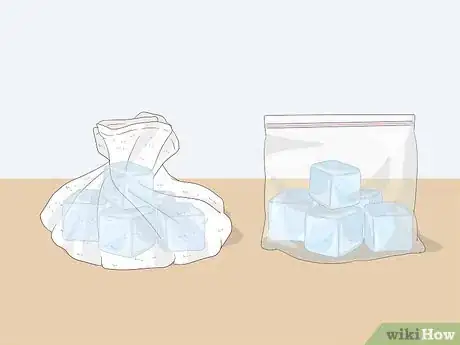
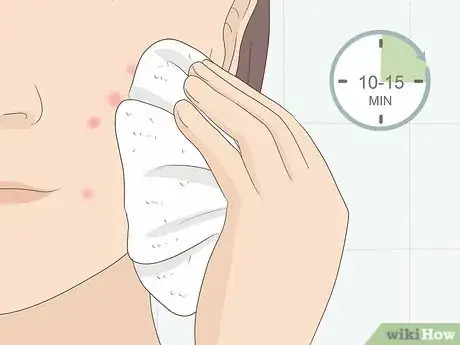

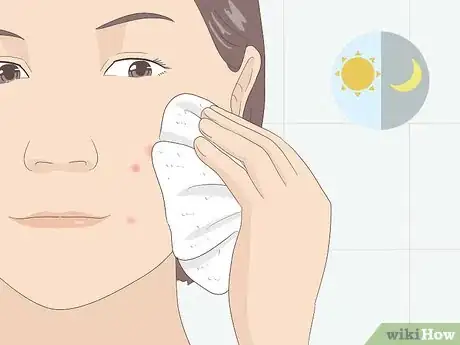
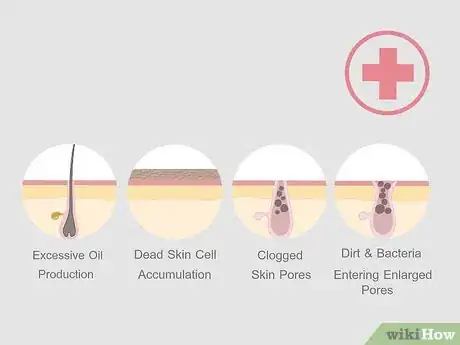
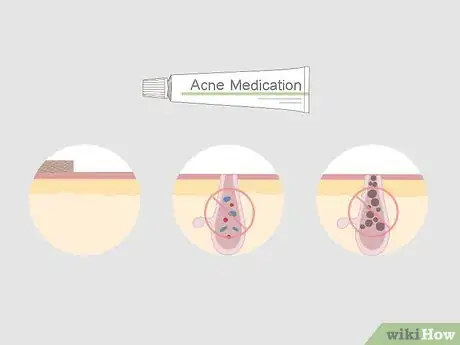
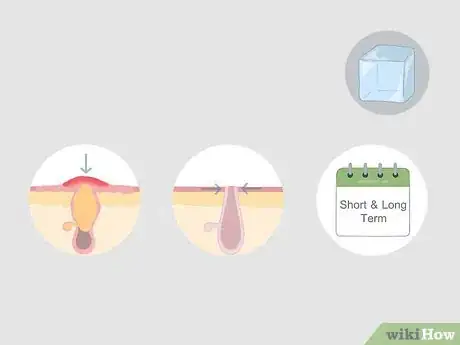
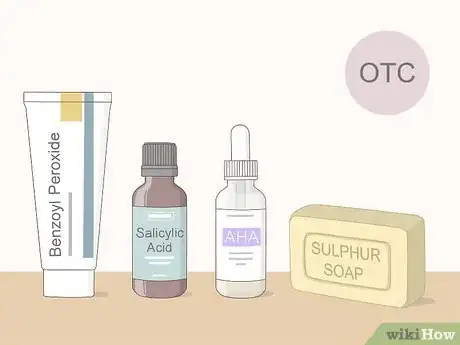
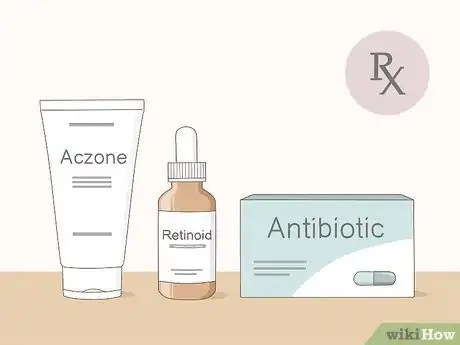
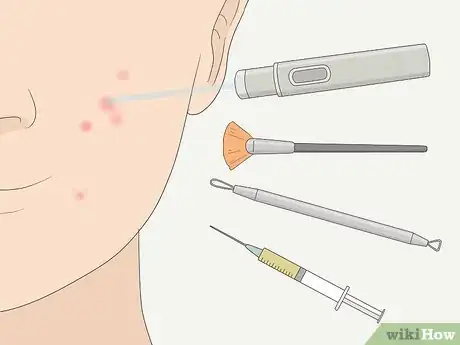
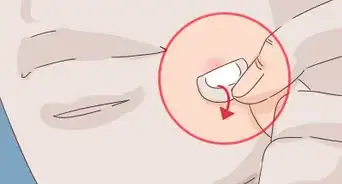
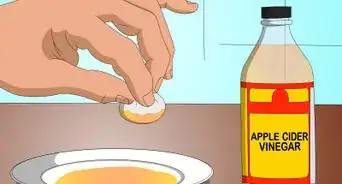
-Step-11-Version-2.webp)
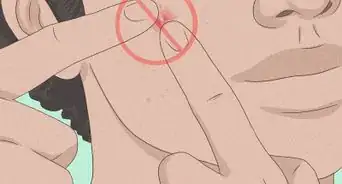
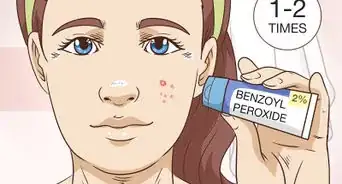
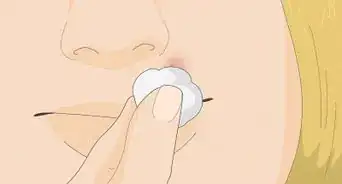
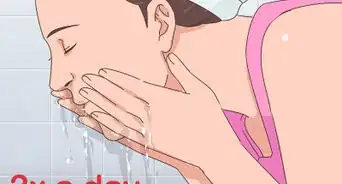
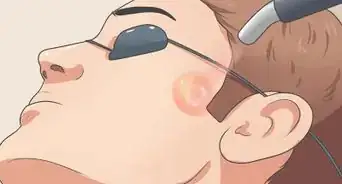
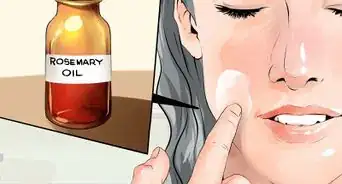









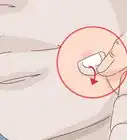
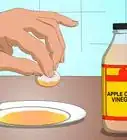
-Step-11-Version-2.webp)
